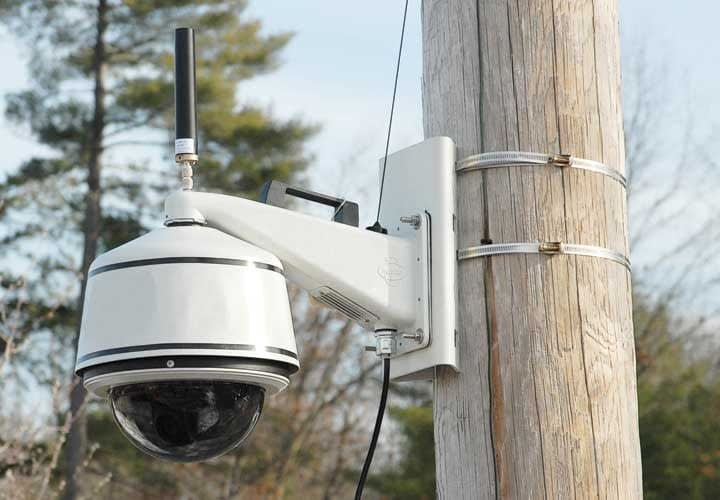Here in the United States, the Chicago Police Department is a big believer in surveillance cameras. There are more than 2,000 government-operated cameras pointed at Chicago streets, transit stations, housing authority properties, and critical infrastructure installations around the city.
Some 170 of these cameras are "blue light cameras," marked with flashing blue lights and Chicago PD emblems identifying them as police cameras. Most of the cameras are mounted on utility poles. They reside in bulletproof, weatherproof housings and can be panned and zoomed by operators in the department's communications center, in district stations, and in some cases by officers in patrol cars.
CPD literature calls the camera a Police Observation Device (POD). And the department's experience has been very different from that in the U.K. A total of 30 PODs were deployed in early 2003 as a pilot program called "Operation Disruption." The idea was to proactively intervene on crime in the areas where the PODs were used. The results were highly positive. All calls for service decreased by 44 percent, with calls related to narcotics down 76 percent in the monitored neighborhoods. At the same time, narcotics arrests in the beats adjoining the target areas increased by almost 152 percent, indicating that dealers and users were migrating away from the cameras.
By December 2003, CPD increased the POD deployment to 80 cameras, and added equipment so that all cameras could transmit wirelessly. The PODs were intended to be relocated as needed, and they were moved frequently to meet changing crime profiles and cover blind spot areas. In 2005, the department added to the inventory "hybrid" PODs that were less prominent. These devices still had flashing blue lights, but they didn't operate continuously. Operators could start the lights flashing from the control center at any time. The next year brought the addition of "Micro-PODs" containing two cameras: one mounted on a rooftop and the other on a tower for high-elevation shots.
In 2006, the Illinois Board of Education recognized that students were at highest risk of violence at the end of the school day. This is when assaults took place near school grounds or at parks, transit stops, and other high-traffic areas. By the end of the 2007 school year, 103 PODs were installed in these areas, and patrols were increased when students were leaving school.












